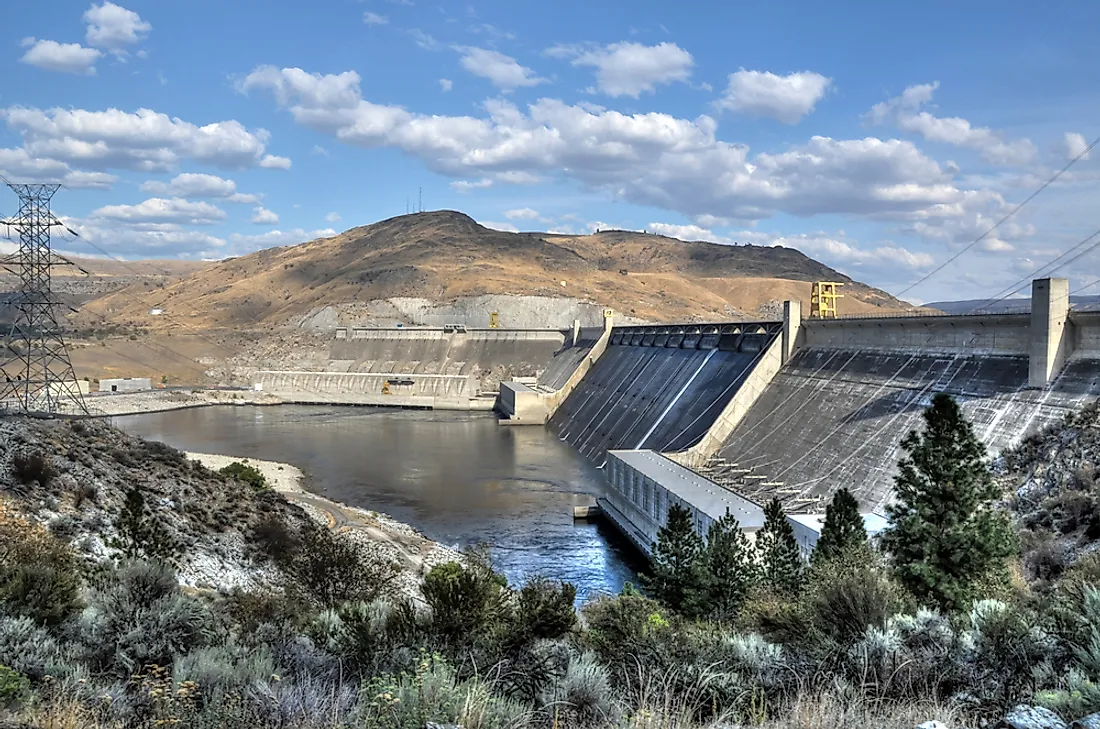The Largest Hydroelectric Power Stations in the United States

Renewable sources account for 17.1% of the total energy produced in the United States, despite the country's sizeable renewable energy potential. Hydroelectric power contributes more than 280 TWh of electricity, which is 6.1% of the total energy consumed in the US. Of the 50 US states, only 34 have hydroelectric power generating facilities. The hydroelectric projects along the Columbia River basin produce the bulk of the nation's hydroelectric power. Initially, the biggest challenge to the adoption of hydroelectricity was the transmission of electricity, as the first projects had a maximum transmission range of 10 miles.
The Largest Hydroelectric Power Stations in the United States
Grand Coulee Dam
The Grand Coulee Dam is by far the largest hydroelectric project in the US, with an installed capacity of 6,809 MW. In addition to producing hydroelectric power, the dam also provides water for irrigation projects that span more than 670,000 acres. The dam has three powerhouses, two of which were completed in 1942, and the third in 1974. The dam caused significant divisions before its construction which necessitated the intervention of then-president Franklin Roosevelt before construction could begin. Despite the dam's numerous benefits, it is continuously criticized for its environmental impact. The dam blocks the migration route of fish, preventing them from spawning. Additionally, the indigenous population living near the dam was the most affected after the dam flooded.
Bath County Pumped Storage Station
The Bath County Pumped Storage Station is the second largest hydroelectric power project in the country, with a capacity production of 3003 MW. The dam was completed in 1985 and upgrades were added in 2009. The dam has earned the nickname of the "largest battery in the world" due to the 33,660 MWh of electricity that can be stored and then transmitted to the PJM Interconnection. The project operates by pumping water, and its efficiency is about 79%, making it one of the most efficient hydropower projects in the U.S.
Chief Joseph Dam
The Chief Joseph Dam is one of the largest hydroelectric projects along the Columbia River, with a production capacity of 2,620 MW. The project has 27 key generators which produce 9,780 GWh of electricity annually. The name was chosen in honor of an indigenous chief who died on the Colville Indian Reservation. The dam has attracted criticism because it prevents the migration of salmon to spawning regions. The water that flows to the project was initially diverted through the Grand Coulee Dam, and then subsequently flowed to the Wells Dam. The dam's reservoir does not store vast quantities of water, meaning that the project is mainly reliant on river water.
Diversifying Energy Sources
Sustainability involves avoiding dependence on a single source of energy, which ensures that the state has sufficient power to satisfy the requirements of its citizens, as well as the businesses operating within its borders. Diversification also creates more jobs in the energy sector, which boosts economic growth. Diversification also ensures that the country can rely on the other sources if once fails. Investing in renewable energy reduces a country's carbon footprint and contributes to reduced pollution.
The Largest Hydroelectric Power Stations in the United States
| Rank | Name | Total Capacity (MW) | Year of Completion |
|---|---|---|---|
| 1 | Grand Coulee | 6,809 | 1942/1980 |
| 2 | Bath County PSP | 3,003 | 1985 |
| 3 | Chief Joseph Dam | 2,620 | 1958/73/79 |
| 4 | Robert Moses Niagara Power Plant | 2,515 | 1961 |
| 5 | John Day Dam | 2,160 | 1949 |
| 6 | Hoover Dam | 2,080 | 1936/1961 |
| 7 | The Dalles Dam | 2,038 | 1957 |











